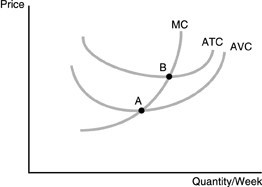A company producing sports equipment wishes to increase its total revenue. Should it increase or decrease its price when the product's price elasticity of demand is equal to -0.8?
(a) Increase - the good is price inelastic and in order to increase TR the firm should increase its price.
(b) Decrease - the good is price elastic and in order to increase TR the firm should decrease its price.
(c) Increase - the good is price elastic and in order to increase TR the firm should increase its price.
(d) Decrease - the good is price inelastic and in order to increase TR the firm should decrease its price.
Answer: (a) Increase - the good is price inelastic and in order to increase TR the firm should increase its price.
You might also like to view...
Severe fiscal imbalances can directly trigger a currency crisis since
A) investors fear that the government may not be able to pay back the debt and so begin to sell domestic currency. B) the government may stop printing money. C) the government may have to cut back on spending. D) the currency must surely increase in value.
 Refer to the above figure. The competitive firm's short run supply curve
Refer to the above figure. The competitive firm's short run supply curve
A. starts at A and goes along the MC curve as quantity increases. B. starts at B and goes along the ATC curve as quantity increases. C. starts at A and goes along the AVC curve as quantity increases. D. starts at B and goes along the MC curve as quantity increases.
For decades, the NCAA restricted the number of college football and basketball games that could be televised, and in 1982 the University of Georgia and the University of Oklahoma sued the NCAA under the federal antitrust laws. In 1984, the Supreme Court
decided the case A) for the NCAA, citing the fact that belonging to the NCAA was voluntary. B) against the NCAA, citing that the NCAA did not control what television networks put on the air. C) against the NCAA, citing anticompetitive practice. D) against the NCAA, citing explicit collusion among the larger colleges.
Answer the next question on the basis of the following information about the hypothetical economy of Asland. All figures are in millions.Unemployed7Total population145Employed95Discouraged workers3The labor force in Asland is
A. 105 million. B. 95 million. C. 102 million. D. 145 million.